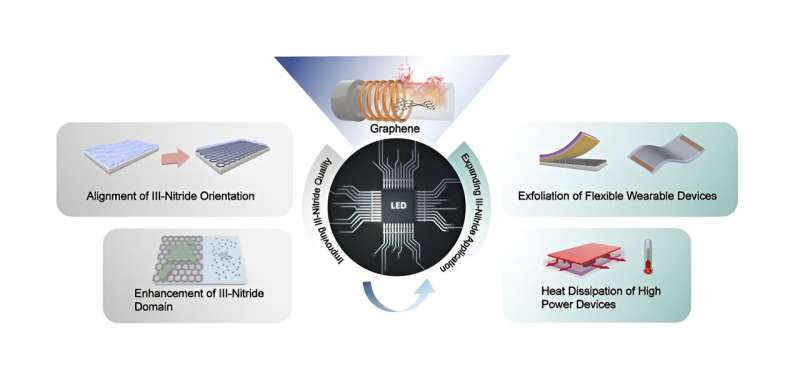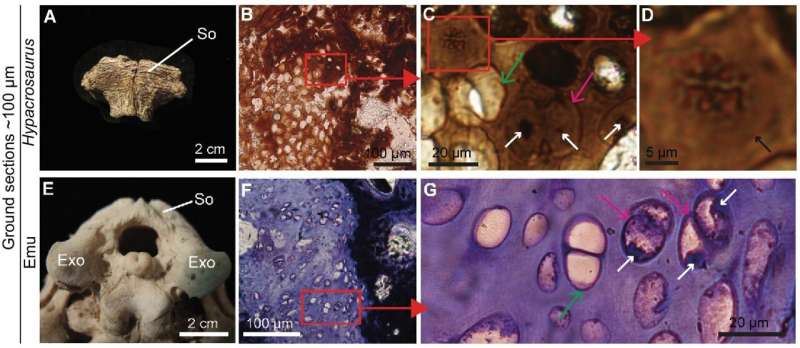This article has been reviewed according to Science X's editorial process and policies. Editors have highlighted the following attributes while ensuring the content's credibility:
fact-checked
trusted source
proofread
Collaborative review unveils the potential of graphene in advancing nitride semiconductor technology

In a comprehensive review, researchers from Soochow University, Beijing Graphene Institute and Xiamen Silan Advanced Compound Semiconductor Co., Ltd. have collaborated to provide a systematic overview of the progress and potential applications of graphene as a buffer layer for nitride epitaxial growth.
The paper brings together perspectives from academia, research institutions, and semiconductor industry professionals to propose solutions for critical issues in semiconductor technology.
Graphene, a two-dimensional material known for its exceptional electrical and mechanical properties, has garnered significant interest for its prospective use in the growth of nitride semiconductors. Despite notable advancements in the chemical vapor deposition (CVD) growth of graphene on various insulating substrates, producing high-quality graphene and achieving optimal interface compatibility with Group III-nitride materials remain major challenges in the field.
The review provides an in-depth look at the bottlenecks in transferred graphene manufacturing techniques and the latest advancements in transfer-free graphene growth. It also discusses the current progress in growing transfer-free graphene on different insulating substrates and its potential applications in nitride epitaxy.

The paper further outlines the promising future of transfer-free graphene growth technology in the nitride epitaxy sector and identifies the challenges that must be overcome to harness its full potential. With a thorough analysis of existing literature, the review serves as a technical and application guide for using graphene in nitride epitaxial growth, encouraging further research in the area.
This review not only offers valuable information to researchers and practitioners but also charts a course for future research directions and technological innovations in the field of nitride epitaxial growth.
More information: Xiang Gao et al, Transfer-free chemical vapor deposition graphene for nitride epitaxy: challenges, current status and future outlook, Science China Chemistry (2023). DOI: 10.1007/s11426-023-1769-y
Provided by Science China Press




















